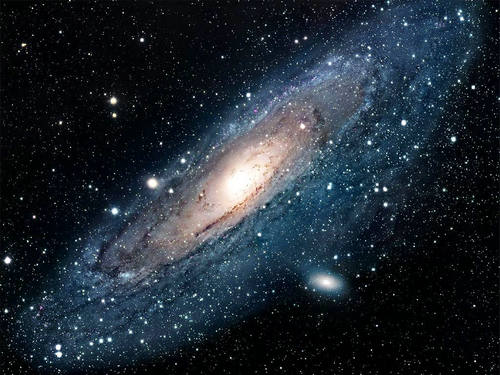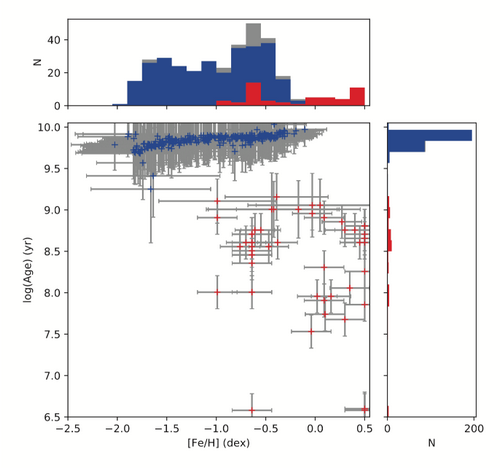The Andromeda galaxy M31 is the nearest archetypical spiral galaxy from our Milky Way. At 2.5 million light years, it serves as one of the best astrophysical laboratories for the studies of the physical and astrophysical processes that govern the morphology, kinematics and chemistry, as well as the formation and evolution of galaxies. Massive stellar clusters, including those young massive clusters and globular clusters, in M31 are excellent tracers for the studies of the formation and evolution of M31 itself. This work has just been accepted by the Astronomy and Astrophysics.

Fig. 1: The image of M31 (Credit: NASA)
Recently, Shoucheng Wang and Prof. Jun Ma from National Astronomical Observatories of CAS (NAOC), and Dr. Bingqiu Chen from Yunnan University have constructed a catalogue of 346 M31 clusters observed by LAMOST. By combining the information of the LAMOST spectra and the multi-band photometry, they developed a new algorithm to estimate the metallicities and ages of these clusters. The new method can break the degeneracy between the young metal-rich and old metal-poor clusters. Ages of ~ 30 catalogued clusters and metallicities of ~ 40 sources are derived for the first time. This provides reliable data support for further studies of stellar evolution and galaxies formation and evolution.
The following Figure 2 displays the relationship between the yielded metallicities and the ages of the sample clusters. Visually the metallicity distribution of M31 old clusters has two peaks but not clearly bimodal.

Fig. 2: Metallicities Vs ages of the 346 sample clusters. (Credit by Bingqiu Chen)
This paper can be accessed at https://ui.adsabs.harvard.edu/abs/2020arXiv201111853W/abstract.

Address: 20A Datun Road, Chaoyang District, Beijing, China code: 100012
Tel: 010-64888708 E-mail: naoc@nao.cas.cn

